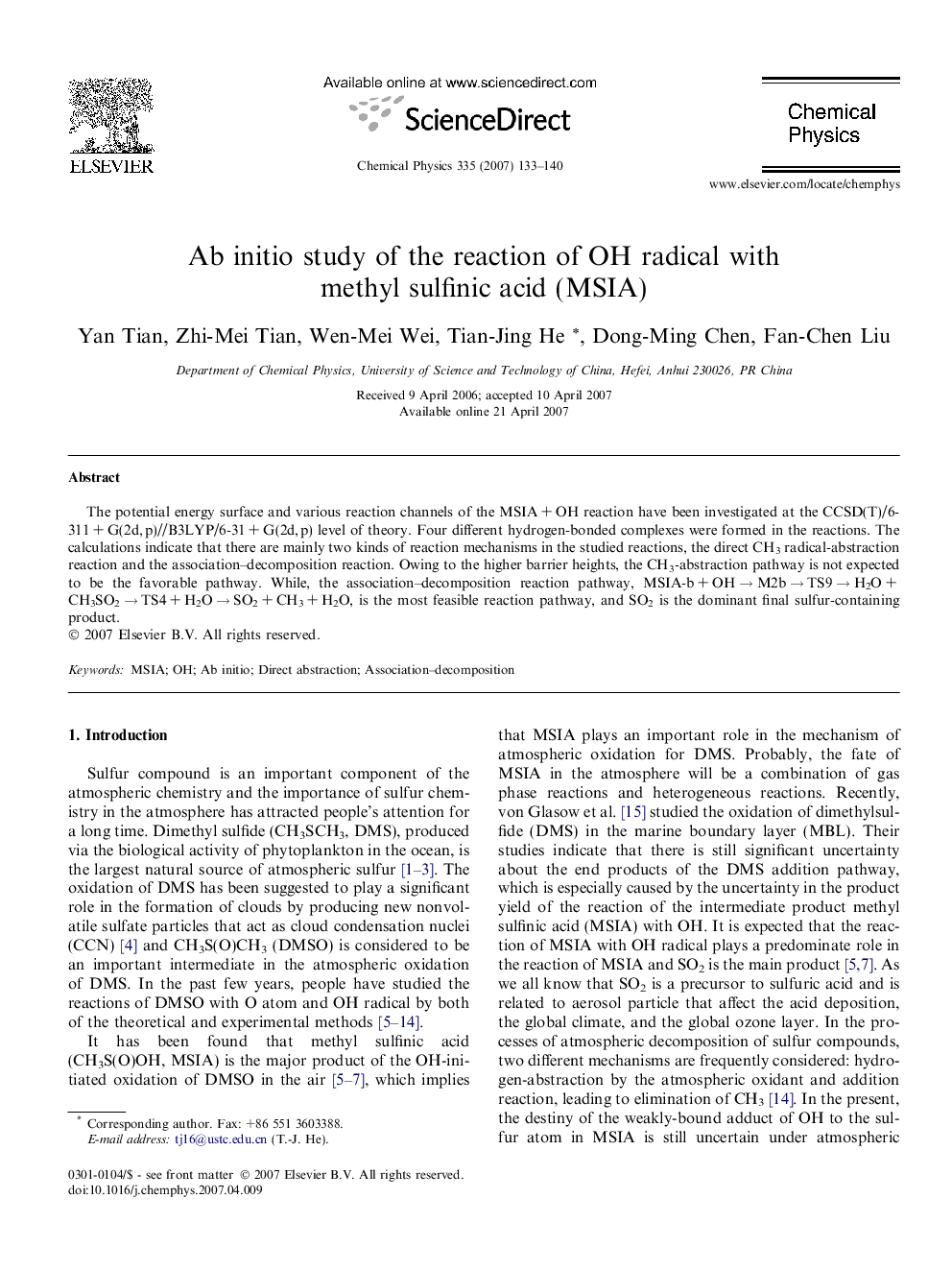| Article ID | Journal | Published Year | Pages | File Type |
|---|---|---|---|---|
| 5376537 | Chemical Physics | 2007 | 8 Pages |
Abstract
The potential energy surface and various reaction channels of the MSIA + OH reaction have been investigated at the CCSD(T)/6-311 + G(2d, p)//B3LYP/6-31 + G(2d, p) level of theory. Four different hydrogen-bonded complexes were formed in the reactions. The calculations indicate that there are mainly two kinds of reaction mechanisms in the studied reactions, the direct CH3 radical-abstraction reaction and the association-decomposition reaction. Owing to the higher barrier heights, the CH3-abstraction pathway is not expected to be the favorable pathway. While, the association-decomposition reaction pathway, MSIA-b + OH â M2b â TS9 â H2O + CH3SO2 â TS4 + H2O â SO2 + CH3 + H2O, is the most feasible reaction pathway, and SO2 is the dominant final sulfur-containing product.
Keywords
Related Topics
Physical Sciences and Engineering
Chemistry
Physical and Theoretical Chemistry
Authors
Yan Tian, Zhi-Mei Tian, Wen-Mei Wei, Tian-Jing He, Dong-Ming Chen, Fan-Chen Liu,
